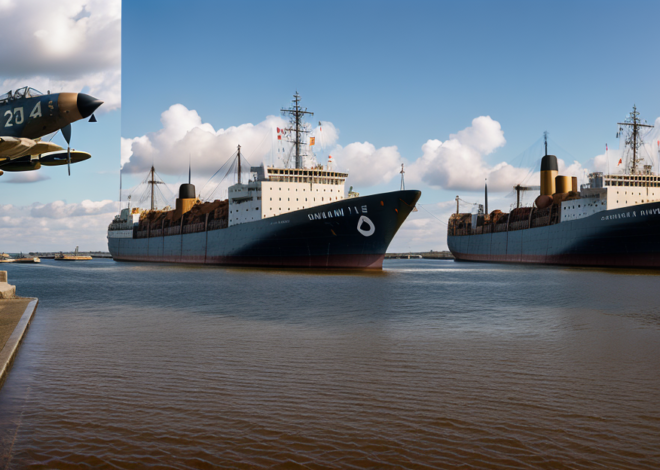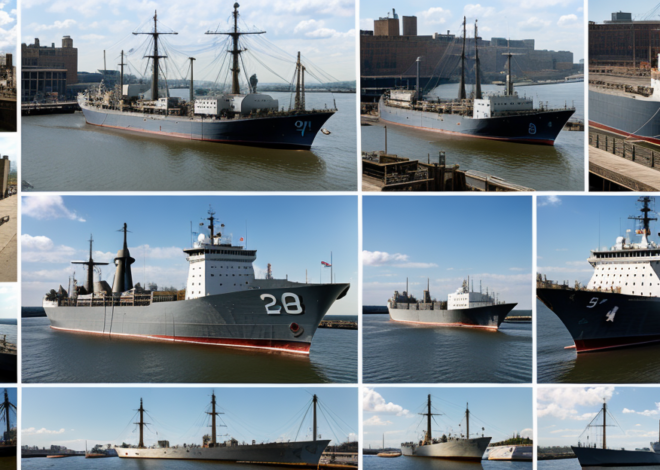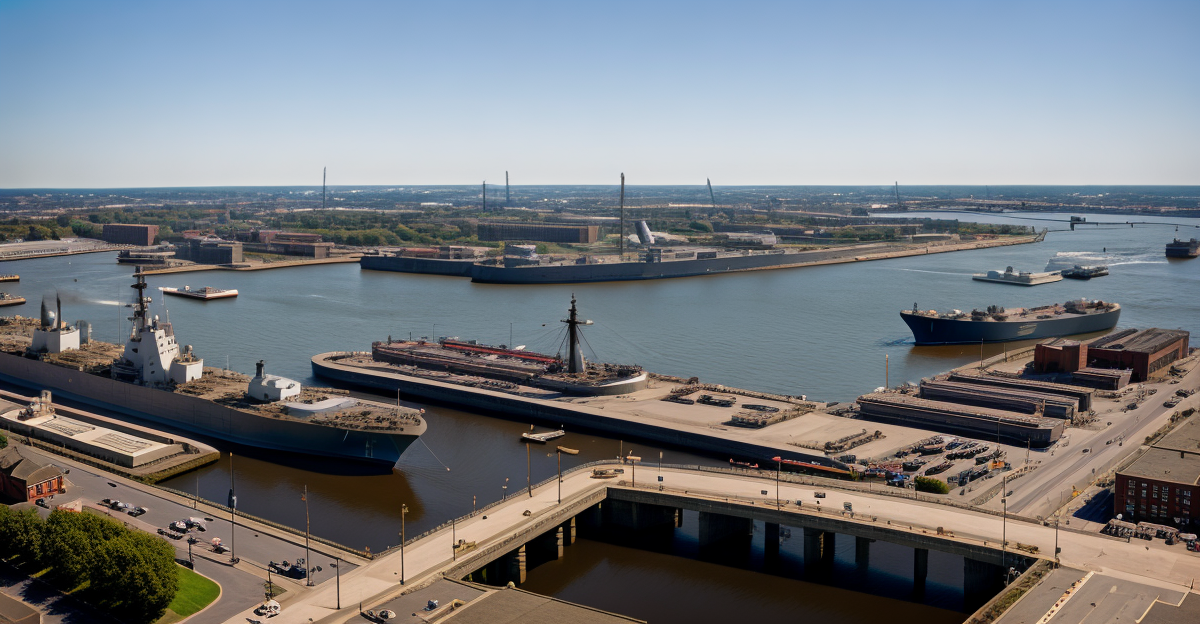
What Role Did Southampton Play in World Wars?
The role of Southampton within the context of the World Wars is an important, yet often overlooked, aspect of global military history.
As a coastal city in southern England, Southampton served as a crucial maritime hub, facilitating the movement of troops, supplies, and information. Its strategic significance was recognized by both allies and enemies, making it a focal point of wartime activities and, subsequently, a target for enemy action.
The city’s wartime experience, thus, extended beyond the immediate impact of conflict, influencing its infrastructure, economy, and social fabric.
As we assess the role of Southampton in the World Wars, we will examine the various ways in which this city was shaped by, and contributed to, these global events, inviting you to further explore this multifaceted historical narrative.
Southampton’s Strategic Importance
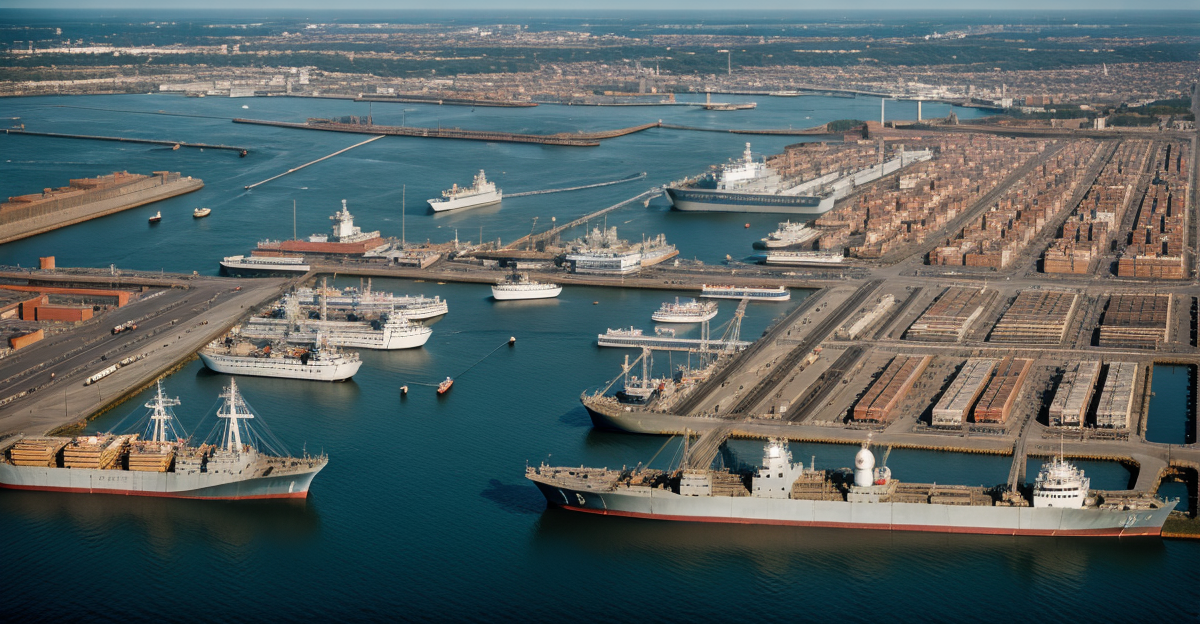
As a pivotal maritime hub, Southampton’s strategic importance during the World Wars cannot be understated, serving as a critical launching point and supply route for Allied forces. The city’s premier location on the south coast of England and its excellent deep-water harbour facilities made it an ideal spot for wartime operations.
Naval advancements in the early 20th century, particularly the development of larger, more efficient ships and submarines, underscored the significance of ports like Southampton. The city’s shipyards were instrumental in producing and maintaining these advanced vessels, contributing to the overall strength of the Allied naval force.
Furthermore, Southampton’s trade routes, especially those connecting Britain to the United States and the rest of the Commonwealth, were of significant strategic value. These routes allowed for the efficient transport of troops, supplies, and critical information. The city’s robust network of docks and warehouses facilitated the rapid loading and unloading of goods, making Southampton a linchpin in the Allied supply chain.
Wartime Infrastructure Developments
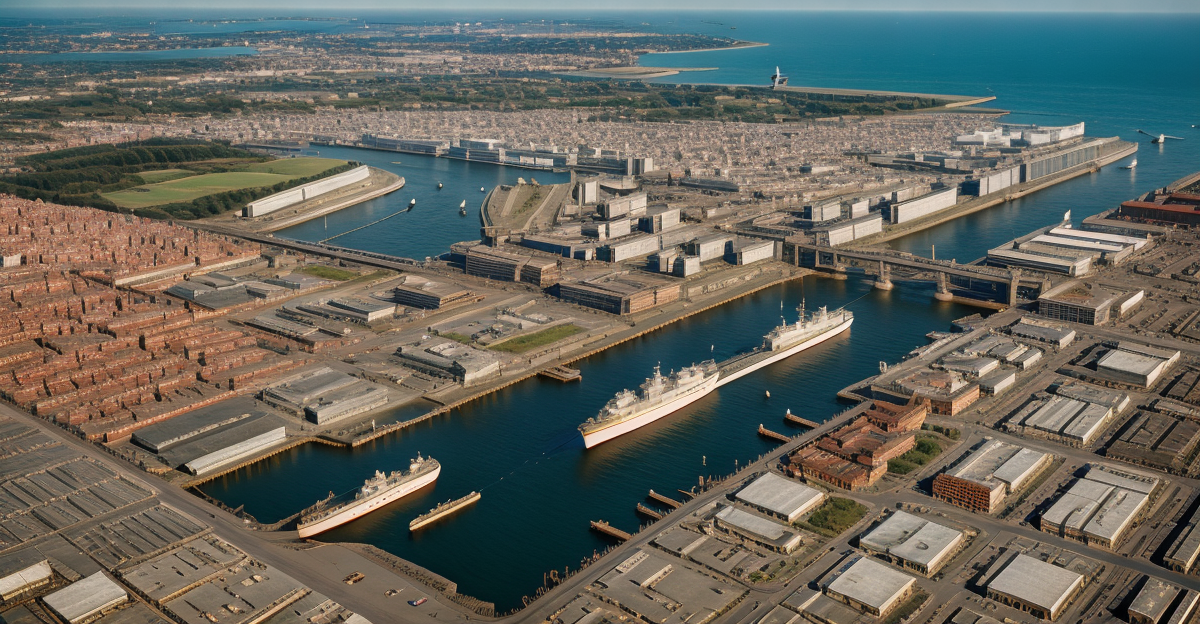
During the course of both World Wars, Southampton underwent significant infrastructure developments aimed at bolstering its capacity as a crucial maritime and logistical hub. Key among these were naval advancements, which included the expansion of dock facilities, the creation of repair workshops, and the enhancement of naval logistical support systems. These developments significantly enhanced Southampton’s ability to handle the increased volume of military and cargo ships and, in turn, effectively served the war efforts.
Parallel to these naval developments, civilian contributions were also instrumental in the city’s wartime infrastructure development. Civilians were involved in the construction of air-raid shelters, the upgrading of roads and railways for more efficient transportation, and the establishment of hospitals to cater to the war-wounded. These measures not only improved the city’s resilience against potential enemy attacks but also ensured the smooth functioning of its daily activities amidst the turbulent wartime conditions.
Additionally, the civilian workforce was mobilized to support the naval advancements, working tirelessly in the shipyards and docks to maintain the city’s maritime operations.
Thus, Southampton’s infrastructure developments during the World Wars were a remarkable testament to the city’s strategic importance and the collective efforts of its naval and civilian personnel.
Southampton in World War I
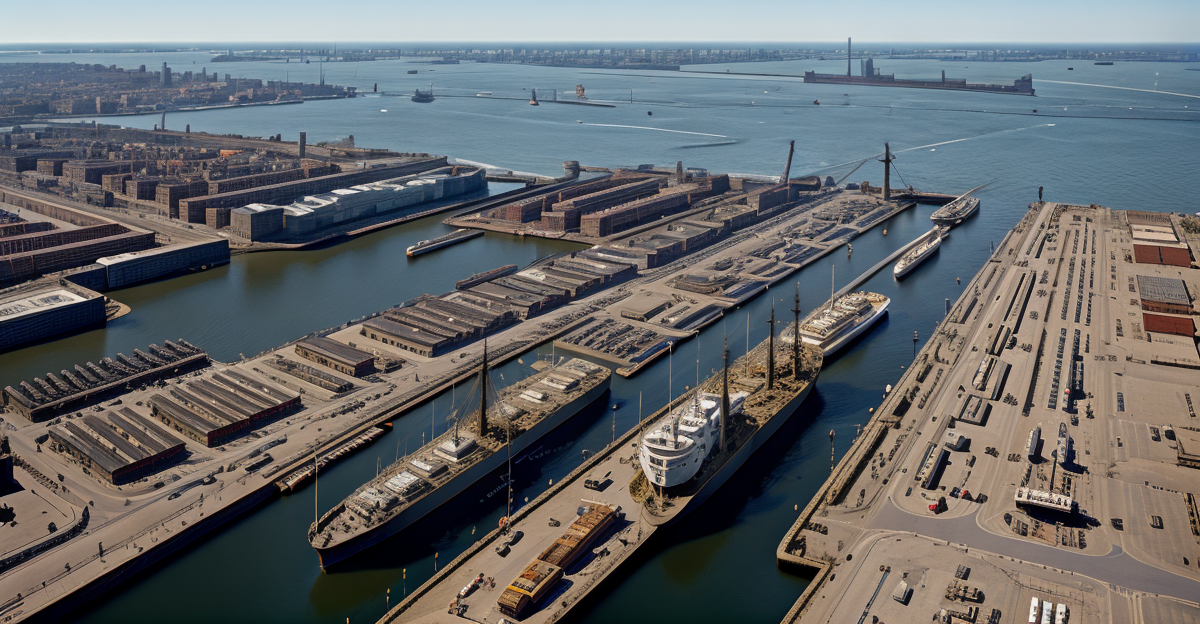
Building upon the foundation of these infrastructure developments, the role of Southampton in World War I emerged as a critical component of the broader war effort, characterized by a diverse array of maritime operations, significant civilian contributions, and strategic military initiatives.
The city’s port, already a significant hub for trade, was quickly repurposed to serve the war effort. It became a primary point for the dispatch of troops and supplies to battlefields, contributing significantly to the Naval Contributions of the war.
The population also participated in Home Front Activities, with women filling jobs left vacant by men called to serve and citizens of all ages contributing to Red Cross and other humanitarian efforts.
Southampton’s strategic location and developed port facilities made it an ideal site for shipbuilding and repair, further enhancing its Naval Contributions. The city also hosted training facilities for naval personnel, solidifying its importance to the war effort.
The role Southampton played in World War I was multifaceted and significant. Its maritime infrastructure and civilian participation in Home Front Activities played a vital part in supporting the national war effort, demonstrating the city’s adaptability and resilience in times of global conflict.
Southampton in World War II
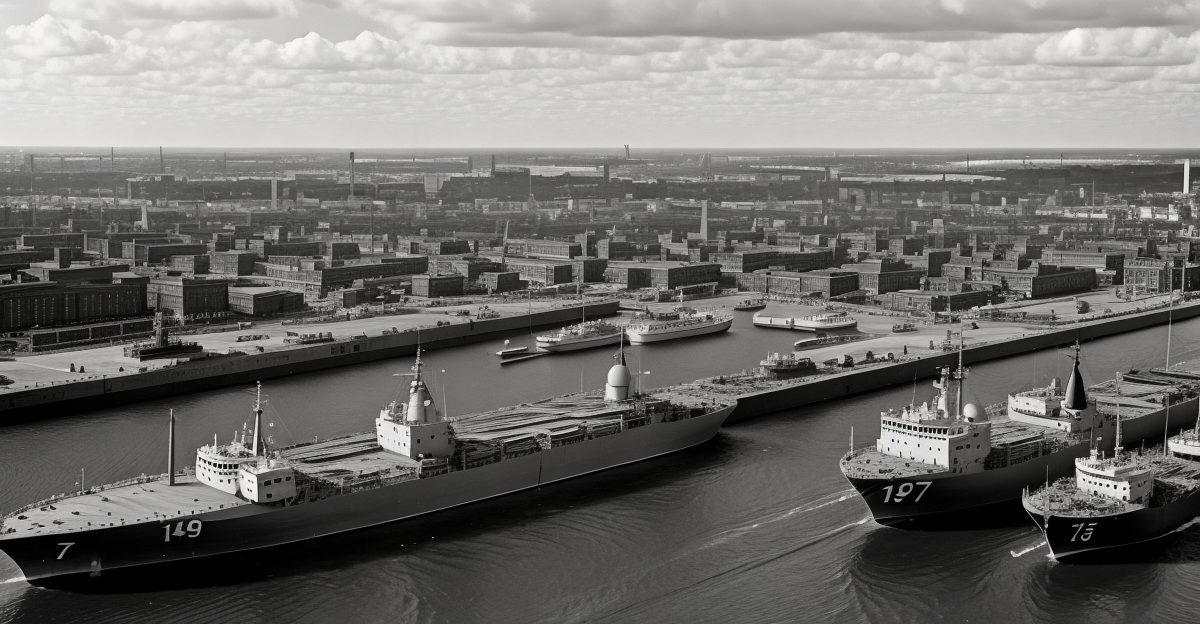
Transitioning into the period of World War II, the significance of Southampton escalated as it once again became a crucial cog in the machinery of war, leveraging its maritime infrastructure, strategic location, and resilient populace to support a nation at war. The port city was instrumental in facilitating the evacuation procedures of British Expeditionary Force from Dunkirk, known as Operation Dynamo.
Southampton’s civilian resilience was tested during the Southampton Blitz when the city suffered heavy bombings. Despite the devastation, the city’s inhabitants displayed commendable fortitude, contributing significantly to the war effort. They repaired infrastructure, provided essential services, and maintained a semblance of daily life amidst the chaos of war.
The city’s strategic location on England’s south coast made it a prime target for the Luftwaffe’s bombing raids, but also an essential point for the launch of the D-Day invasion. Its shipbuilding industry, although targeted in air raids, was vital in producing warships and landing craft.
Notably, the execution of well-planned evacuation procedures saved countless lives, as children and vulnerable people were moved to safer areas. Southampton’s story in World War II is indeed a testament to the indomitable spirit of its people and the pivotal role it played in the war effort.
Post-War Recovery and Impact
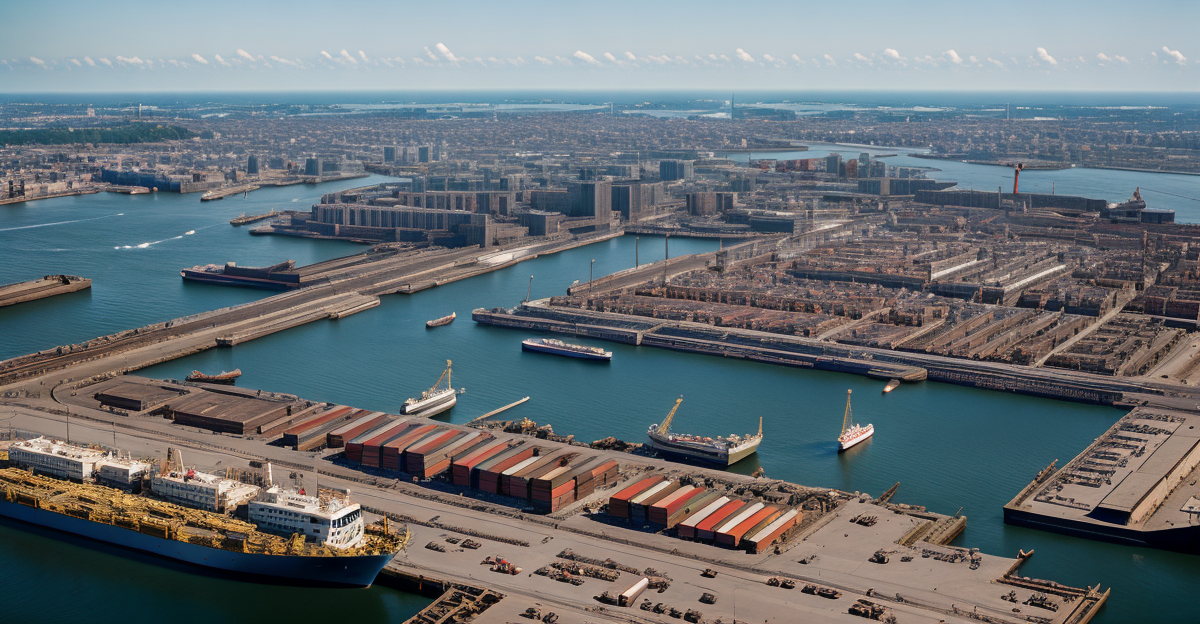
Following the cessation of World War II, Southampton faced the monumental task of rebuilding and healing, a process that not only shaped its post-war landscape but also left a profound impact on its socio-economic fabric. The city underwent a significant economic transformation, transitioning from a war-torn hub to a thriving industrial and commercial center. Rebuilding the city’s infrastructure, particularly the port, became a priority and a catalyst for economic growth.
The economic resurgence led to significant social changes as employment opportunities increased, attracting immigrants and leading to a more diverse population. The city’s cultural fabric became enriched, contributing to a broader social shift.
However, the recovery was not without challenges. The city had to grapple with housing shortages and the social fallout from the war, such as trauma and dislocation. The city’s authorities, along with community organizations, played a critical role in addressing these issues, fostering a sense of unity and resilience.

